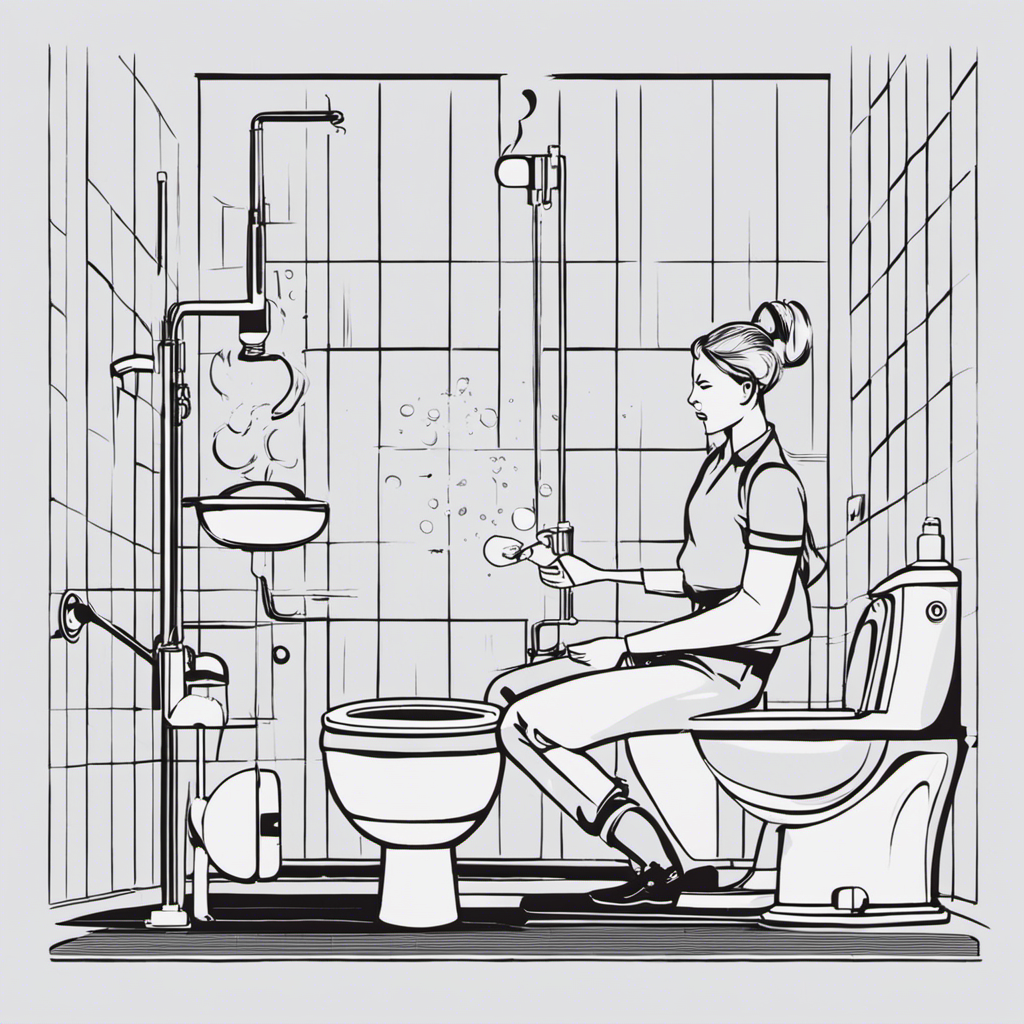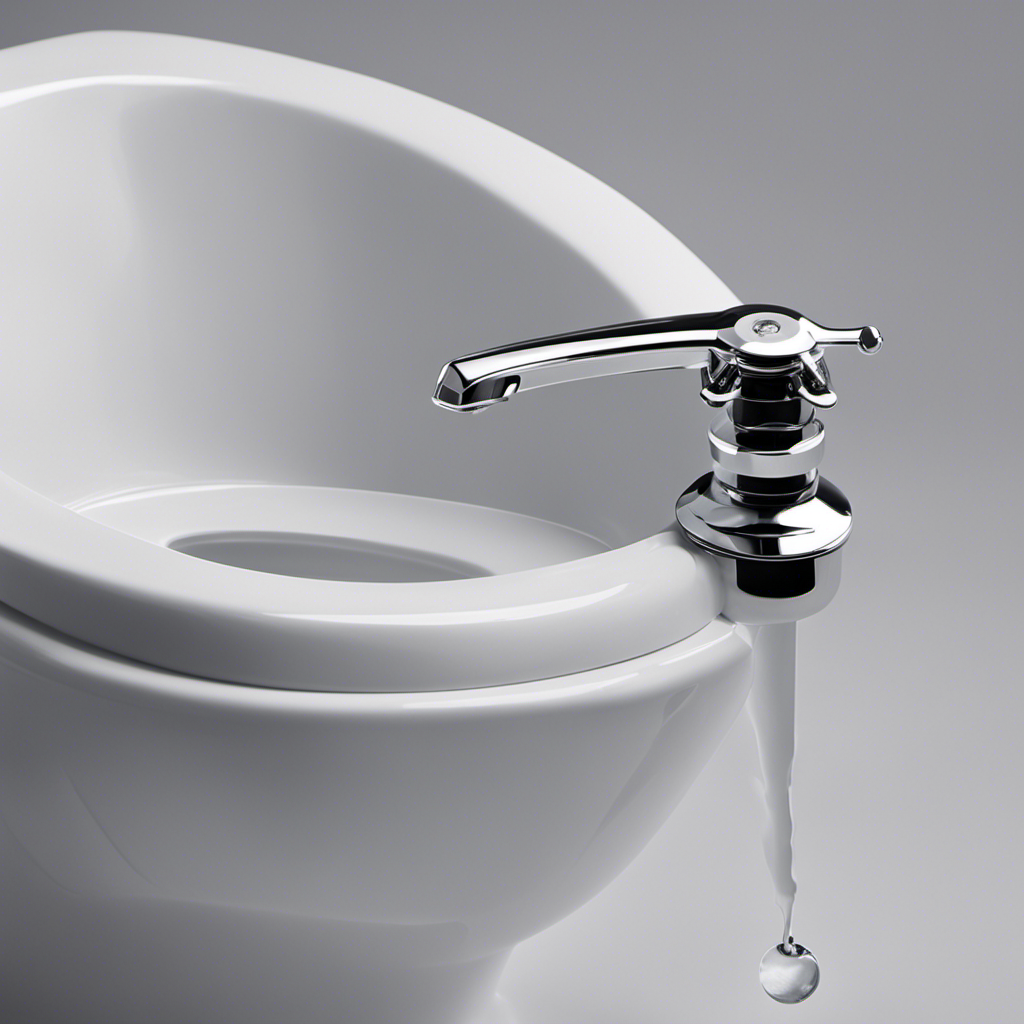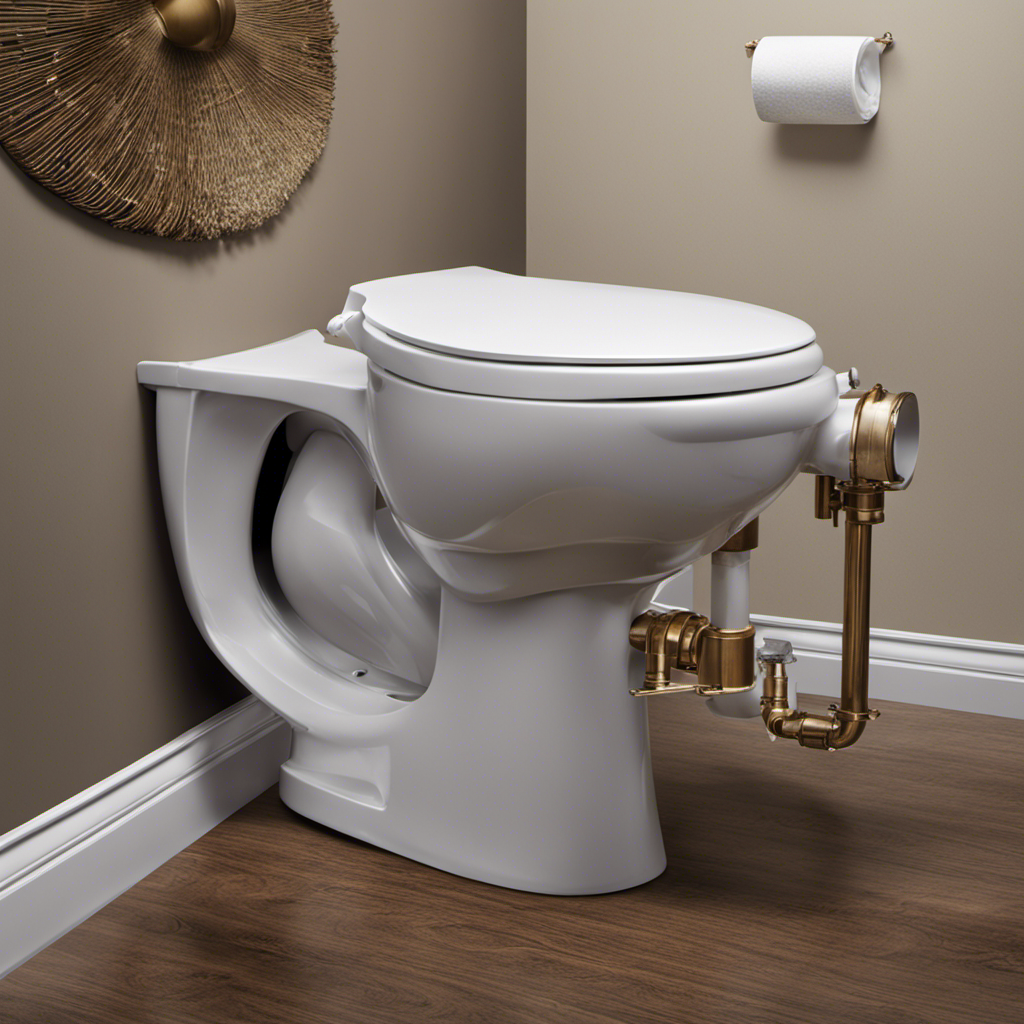As someone who’s dealt with a persistently high water level in their toilet bowl, I know how frustrating it can be. Thankfully, there are simple steps you can take to lower the water level and prevent any potential overflow.
In this article, I’ll guide you through the process of identifying the cause of the high water level and making necessary adjustments to the fill valve and float ball or cup.
With these tips, you’ll have a smoothly functioning toilet in no time. Let’s dive in!
Key Takeaways
- Regularly inspect and maintain the fill valve and flapper to ensure proper water level in the toilet bowl.
- Troubleshoot high water levels by identifying possible causes such as clogged drain, faulty fill valve, high water pressure, malfunctioning flapper, or blocked vent pipe.
- Adjust the fill valve and float valve to effectively lower the water level in the toilet bowl.
- Clear blockages using a plunger or toilet auger to reduce water level and maintain proper toilet functionality.
Understanding the Water Level in Your Toilet Bowl
To understand the water level in your toilet bowl, you should check the fill valve and flapper. These two components play a crucial role in maintaining the proper water level and preventing any issues with your toilet.
The fill valve is responsible for controlling the flow of water into the tank, while the flapper regulates the release of water into the bowl. By regularly inspecting and maintaining these parts, you can ensure that your toilet functions efficiently and avoids any unnecessary water waste.
This is not only important for toilet bowl maintenance but also for implementing water conservation techniques. By keeping the water level in your toilet bowl at an optimal level, you can contribute to saving water and reducing your environmental impact.
Identifying the Cause of High Water Level
Have you checked the possible causes for the high water level in your toilet? Troubleshooting high water levels is essential to prevent toilet bowl overflow. There are several common causes that could be contributing to the issue. Let’s take a look at them in the table below:
| Possible Causes | Symptoms | Solutions |
|---|---|---|
| Clogged drain | Water rises and drains slowly | Use a plunger or snake the drain |
| Faulty fill valve | Continuous water flow | Adjust or replace the fill valve |
| High water pressure | Water splashes excessively | Install a pressure-reducing valve |
| Malfunctioning flapper | Water continuously runs into the bowl | Replace or adjust the flapper |
| Blocked vent pipe | Gurgling sounds from the toilet | Clear the vent pipe obstruction |
Identifying the cause of the high water level is crucial to resolving the issue. Once you have determined the culprit, you can take appropriate action to fix it. In the next section, we will discuss how to adjust the fill valve to lower the water level in your toilet bowl.
Adjusting the Fill Valve to Lower Water Level
When it comes to controlling the water level in a toilet bowl, adjusting the fill valve is a crucial step. By making small adjustments to the fill valve, you can effectively lower the water level in the bowl.
This is important for preventing overflow and maintaining proper functionality of the toilet.
Fill Valve Adjustment
Adjusting the fill valve will help you lower the water level in your toilet bowl.
When it comes to toilet bowl maintenance, troubleshooting the water level is a common issue. If you notice that the water level in your toilet bowl is too high, it may be due to a problem with the fill valve.
The fill valve is responsible for refilling the tank after each flush. By adjusting the fill valve, you can control the amount of water that fills the tank, thus lowering the water level in the toilet bowl.
To do this, locate the fill valve, usually on the left side of the tank, and turn the adjustment screw clockwise to decrease the water level. It’s important to make small adjustments and test the water level after each adjustment to ensure it’s at the desired level.
Lowering Water Level
To decrease the amount of water in your toilet, you can simply adjust the fill valve. By reducing the water level in the toilet tank, you can contribute to water conservation efforts.
Here are some steps to help you lower the water level in your toilet:
- Locate the fill valve: Typically, it is located on the left side of the toilet tank.
- Adjust the water level: Turn the adjustment screw clockwise to lower the water level.
- Test and repeat: Flush the toilet and observe if the water level has lowered. If not, repeat the adjustment process until the desired level is achieved.
Lowering the water level in your toilet tank is an effective way to conserve water and reduce your environmental impact. Remember to regularly check and adjust the fill valve to maintain optimal water levels for flushing.
Toilet Bowl Water Control
If you want to control the amount of water in your toilet bowl, try adjusting the float mechanism. This simple maintenance task can help you conserve water and reduce your water bill. By adjusting the float mechanism, you can lower the water level in the toilet bowl, reducing the amount of water used with each flush. It’s a quick and easy way to promote water conservation in your home.
To give you a better understanding of how the float mechanism works, here is a table outlining the different water levels and their corresponding float positions:
| Water Level | Float Position |
|---|---|
| High | Fully raised |
| Medium | Partially down |
| Low | Fully down |
| Very Low | Below the water line |
Checking and Adjusting the Float Ball or Cup
First, make sure the float ball or cup in your toilet tank is properly adjusted to lower the water level in the bowl. This is an essential step in preventing toilet bowl overflow. Maintaining the float ball is crucial for the efficient functioning of your toilet.
Here are some important points to consider:
- Regularly inspect the float ball for any signs of damage or wear.
- Ensure that the float ball is not rubbing against the sides of the tank, as this can affect its movement.
- Adjust the float ball to the correct water level by gently bending the float arm.
- If the water level is too high, bend the float arm downwards.
- If the water level is too low, bend the float arm upwards.
Clearing Any Blockages to Reduce Water Level
You can clear any blockages in order to reduce the amount of water in your toilet. One common method for clearing clogs is by using a plunger. To do this, place the plunger over the drain hole in the toilet bowl, ensuring a tight seal. Then, push down firmly and forcefully, followed by a quick pull up. Repeat this motion several times until the clog is dislodged and the water level starts to decrease.
If the blockage persists, you may need to try a more powerful method, such as using a toilet auger or calling a professional plumber. By clearing any blockages, you can effectively lower the water level in your toilet.
Now, let’s move on to some additional tips for maintaining a lower water level.
Additional Tips for Maintaining a Lower Water Level
One way to effectively maintain a lower water level in your toilet is by adjusting the float valve. This is a simple and effective method that can help in maintaining water efficiency and troubleshooting water level issues.
Here are some additional tips to keep in mind:
- Regularly check the float valve adjustment to ensure it is set at the desired water level.
- Inspect the flapper valve for any signs of damage or wear and replace it if necessary.
- Consider installing a dual-flush system that allows you to choose between a partial or full flush, further reducing water usage.
By following these tips, you can effectively maintain a lower water level in your toilet, saving water and promoting water efficiency.
Troubleshooting any water level issues promptly can help prevent wastage and ensure optimal functioning of your toilet.
Conclusion
To conclude, lowering the water level in your toilet bowl is a simple task that can be achieved with a few adjustments. By understanding the water level and identifying the cause of high water, you can easily adjust the fill valve or float ball to lower the water level.
Clearing any blockages will also help in reducing the water level. Maintaining a lower water level in your toilet bowl is like creating a serene oasis in a sea of possibilities.
So go ahead, take control of your toilet’s water level and enjoy a peaceful and efficient flushing experience.










